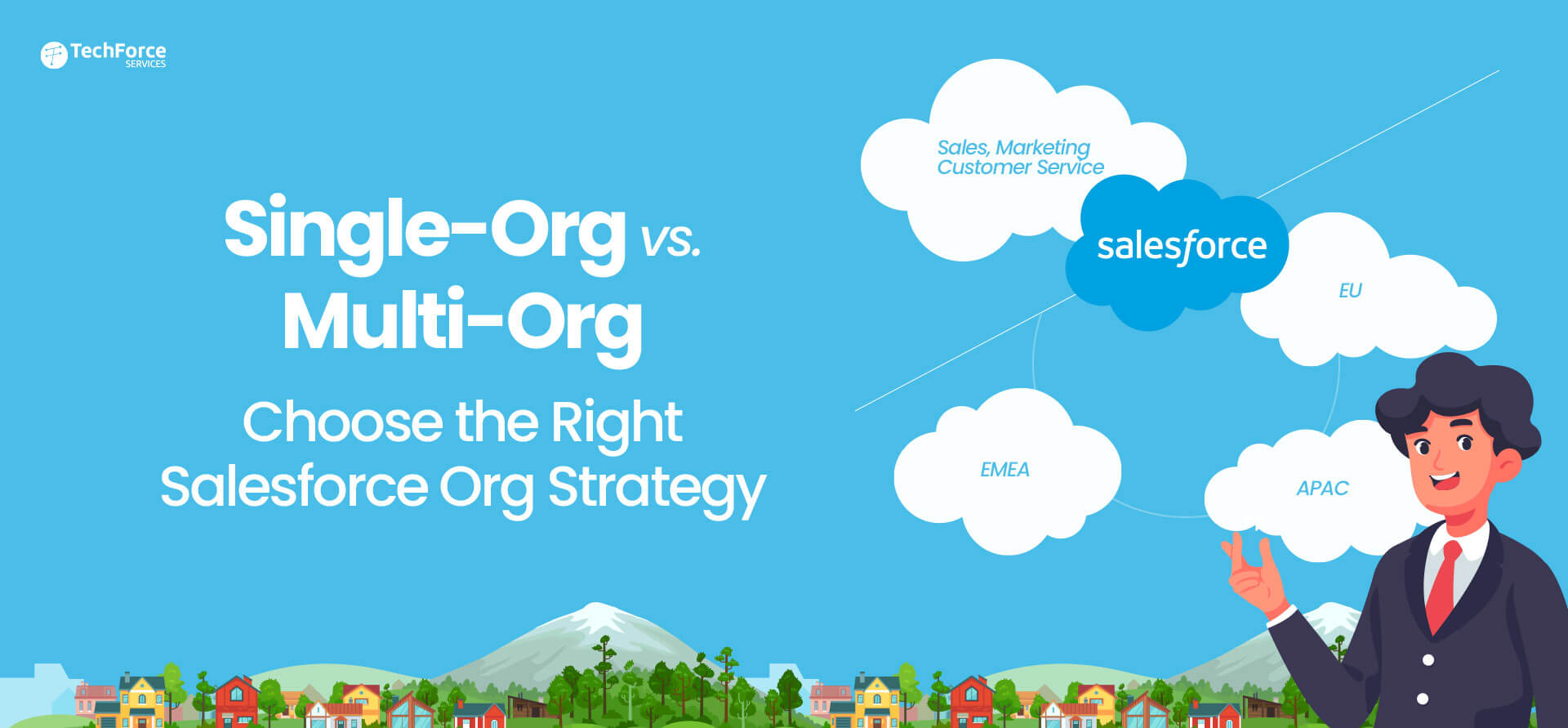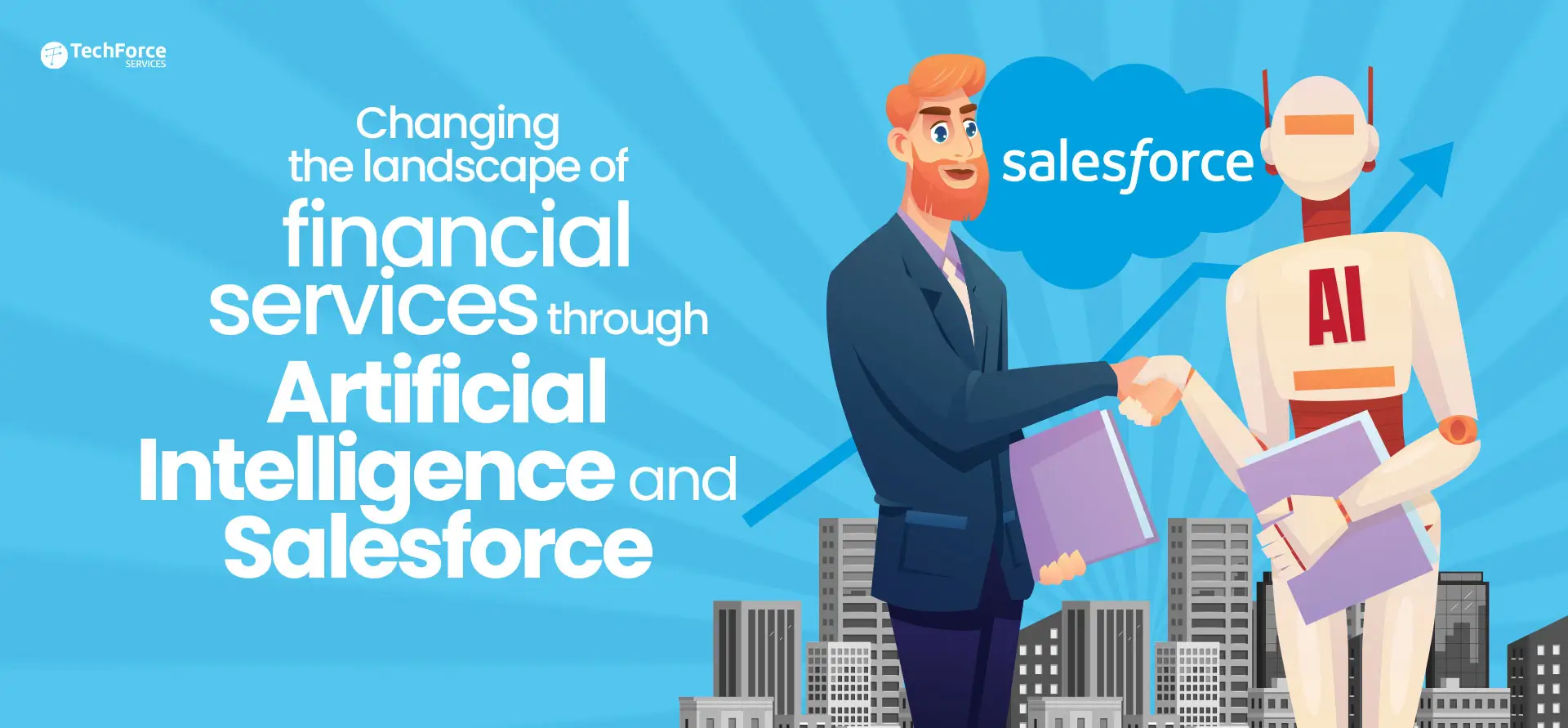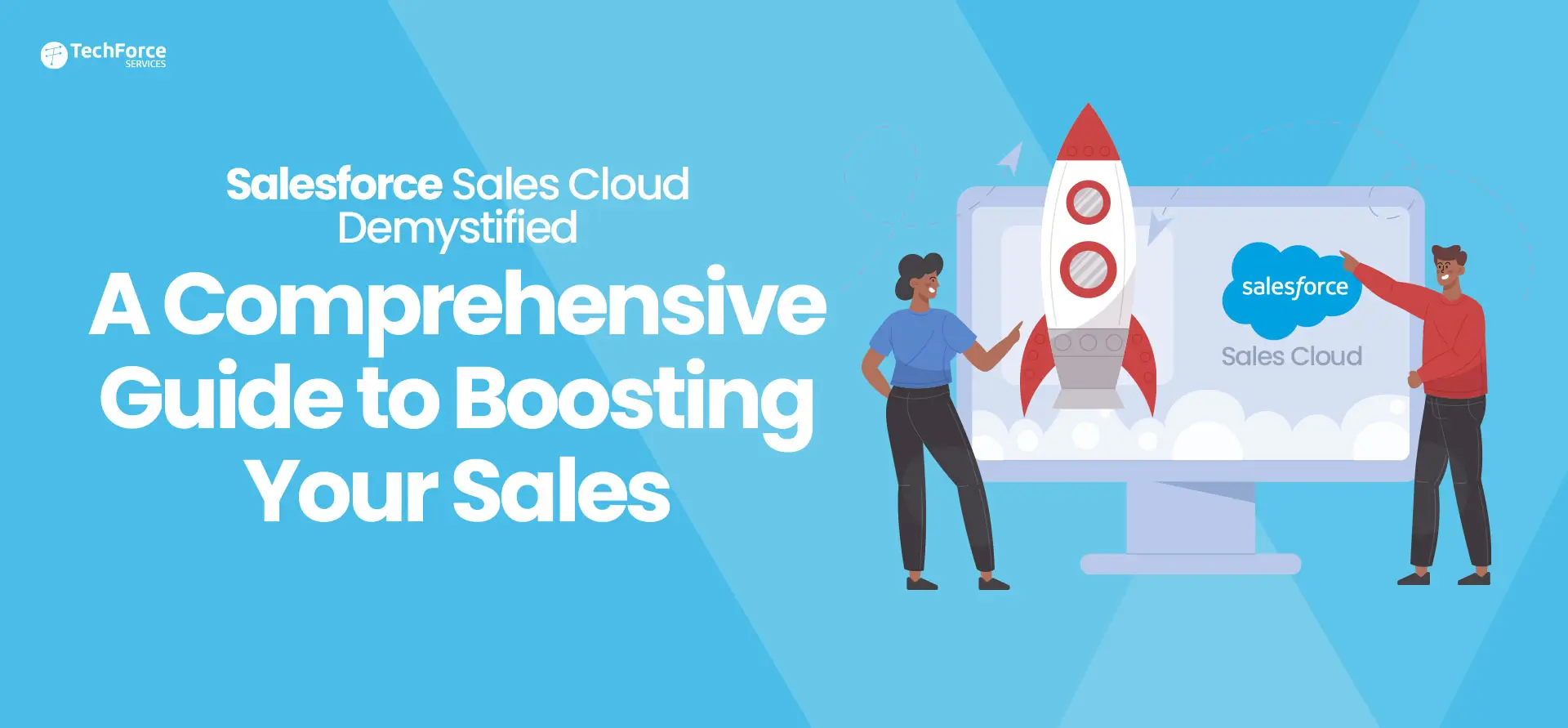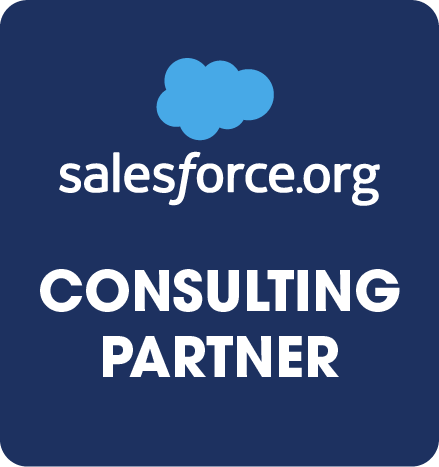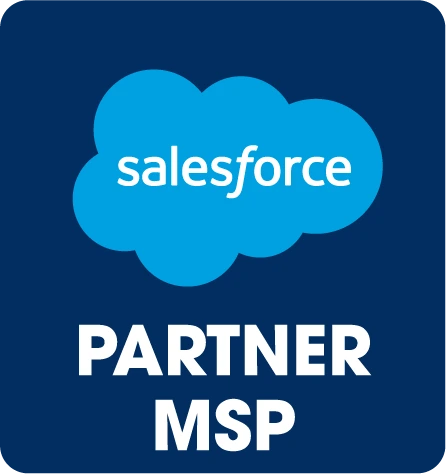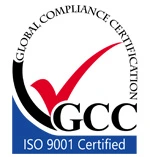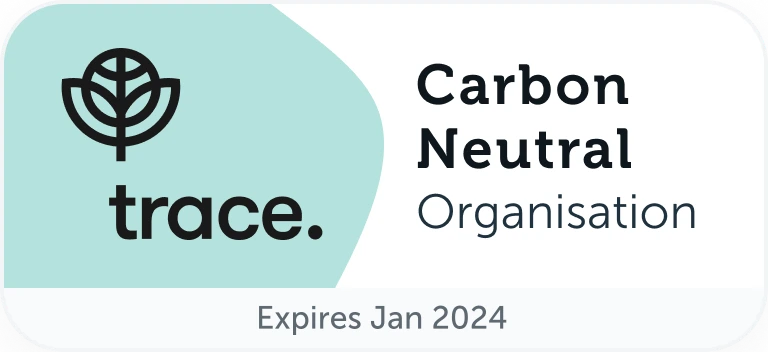The “org strategy” is one of the key decisions you’ll need to make along your Salesforce journey. It’s one of the most fundamental and architecturally important decisions you will need to make – one that will affect every future Salesforce initiative and design.
What it really means is, “How many instances will you have of Salesforce in your organisation?
When it comes to Salesforce org strategy, there are two main options to consider: single-org and multi-org. Let’s break down each strategy to help you make an informed decision for your business.
Single-Org Strategy
A single-org strategy involves having a single Salesforce org that serves as the central hub for all your business operations. It is suitable for small to medium-sized businesses with a relatively straightforward structure. Here are some key points to consider:
Simplified management: With a single-org approach, you have a unified view of your data, processes, and users. This can streamline administration and reduce complexity.
Seamless collaboration: All teams within your organisation can collaborate and share data easily within a single org. This can enhance communication and efficiency.
Consistent reporting and analytics: Since all data resides in one org, it is easier to generate accurate and comprehensive reports and analytics.
Multi-Org Strategy
A multi-org strategy involves having multiple Salesforce orgs, each serving a specific business function, department, or region. This approach is typically adopted by larger enterprises or organisations with complex business structures. Here are some key points to consider:
Isolated data and security: Each org operates independently, allowing for stricter control over data access and security. This can be beneficial when dealing with sensitive information or regulatory compliance.
Customisation and scalability: Different orgs can be customised to meet specific business needs, allowing for more flexibility and scalability. This can be useful when different departments have unique requirements.
Complexity and integration challenges: Managing multiple orgs can be more complex and may require integrations between them. This can add complexity to administration and data synchronisation.
How can I determine whether a single-org or multi-org strategy is more suitable for my business?
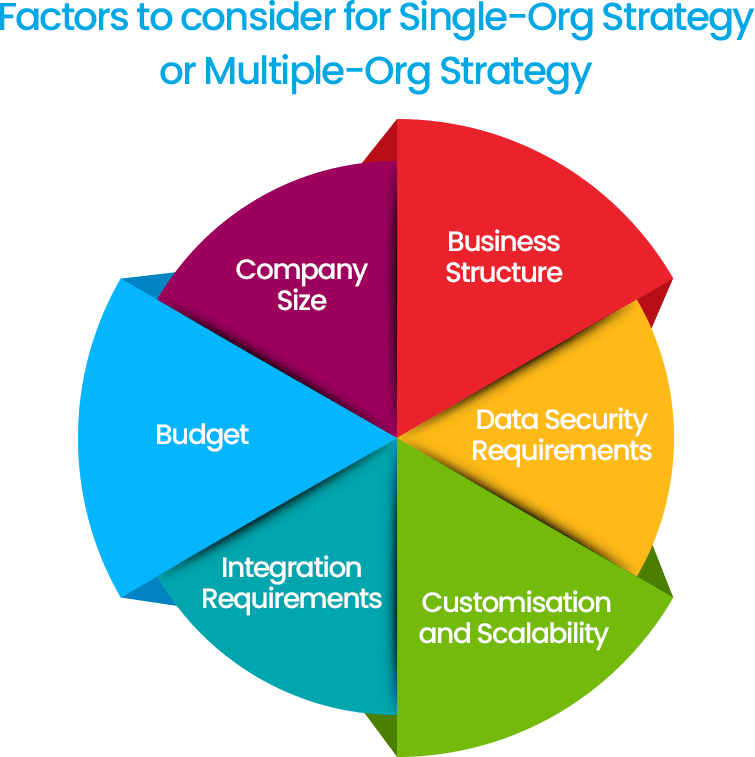
To determine, there are several factors that you should consider:
Company size: Single-org strategy is typically suitable for small to medium-sized businesses, while multi-org strategy is more common in larger enterprises.
Business structure: If your business has a relatively straightforward structure, a single-org strategy may be more suitable. However, if your business has multiple departments, regions, or business functions, a multi-org strategy may be more appropriate.
Data security requirements: If you deal with sensitive information, regulatory compliance, or have strict data access requirements, a multi-org strategy may be more suitable, as it allows for greater control over data access and security.
Customisation and scalability: If your business requires customisation and scalability for different departments or regions, a multi-org strategy may be more appropriate, as each org can be customised to meet specific business needs.
Integration requirements: If your business requires integrations between different systems or departments, a multi-org strategy may be more complex, as it requires synchronisation between multiple orgs.
Budget: A single-org strategy may be more cost-effective for small or medium-sized businesses, while a multi-org strategy may involve higher costs due to the need for multiple orgs and potential integrations.
Are there any specific industry considerations that can help determine whether a single-org or multi-org strategy is more suitable?
Yes, there are specific industry considerations that can help determine whether a single-org or multi-org strategy is more suitable. Here are some examples:
Healthcare: Healthcare organisations often deal with sensitive patient data and have strict regulatory compliance requirements. Therefore, a multi-org strategy may be more suitable for healthcare organisations as it provides greater control over data access and security.
Financial services: Financial services organisations also deal with sensitive data and have strict regulatory compliance requirements. A multi-org strategy may be more suitable for financial services organisations as it allows for greater control over data access and security.
Retail: Retail organisations may have multiple stores or regions that require different levels of customisation and scalability. Therefore, a multi-org strategy may be more suitable for retail organisations as it allows for each store or region to have its own org customised to meet its specific needs.
Manufacturing: Manufacturing organisations may have multiple departments or business functions that require different levels of customisation and scalability. Therefore, a multi-org strategy may be more suitable for manufacturing organisations as it allows for each department to have its own org customised to meet its specific needs.
Non-profit: Non-profit organisations may have multiple programs or initiatives that require different levels of customisation and scalability. Therefore, a multi-org strategy may be more suitable for non-profit organisations as it allows for each program or initiative to have its own org customised to meet its specific needs.
It’s important to evaluate industry-specific factors and consult with Salesforce experts or professionals before making a decision on whether to adopt a single-org or multi-org strategy.
The main advantages and disadvantages of a single-org strategy!!!
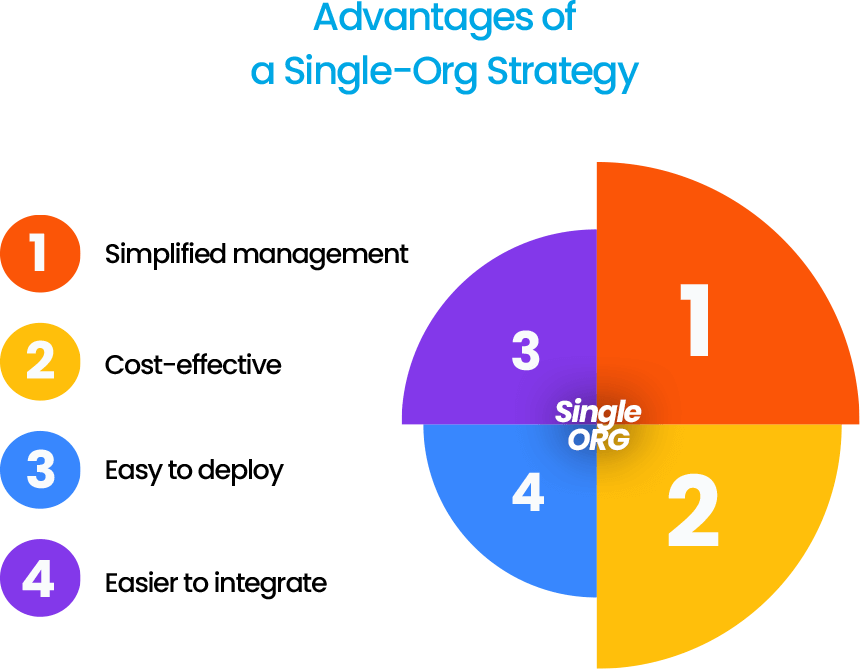
Advantages
Simplified management: With a single-org strategy, all data and processes are managed in a single organisation, which can make it easier to manage and maintain.
Cost-effective: A single-org strategy can be more cost-effective for small to medium-sized businesses as it requires fewer resources and may not require additional licenses.
Easy to deploy: A single-org strategy can be deployed more quickly and easily than a multi-org strategy since there is only one org to set up and configure.
Easier to integrate: A single-org strategy can be easier to integrate with other systems and applications since there is only one org to connect.
Disadvantages
Limited scalability: A single-org strategy may be less scalable than a multi-org strategy since all data and processes are managed within a single organisation.
Limited customisation: A single-org strategy may offer limited customisation options since all departments and users must work within the same org.
Limited control: A single-org strategy may offer limited control over data access and security since all users must work within the same org.
Limited flexibility: A single-org strategy may offer limited flexibility since all departments and users must work within the same org and may not be able to customise their own workflows or processes.
The main advantages and disadvantages of a multi-org strategy!!!
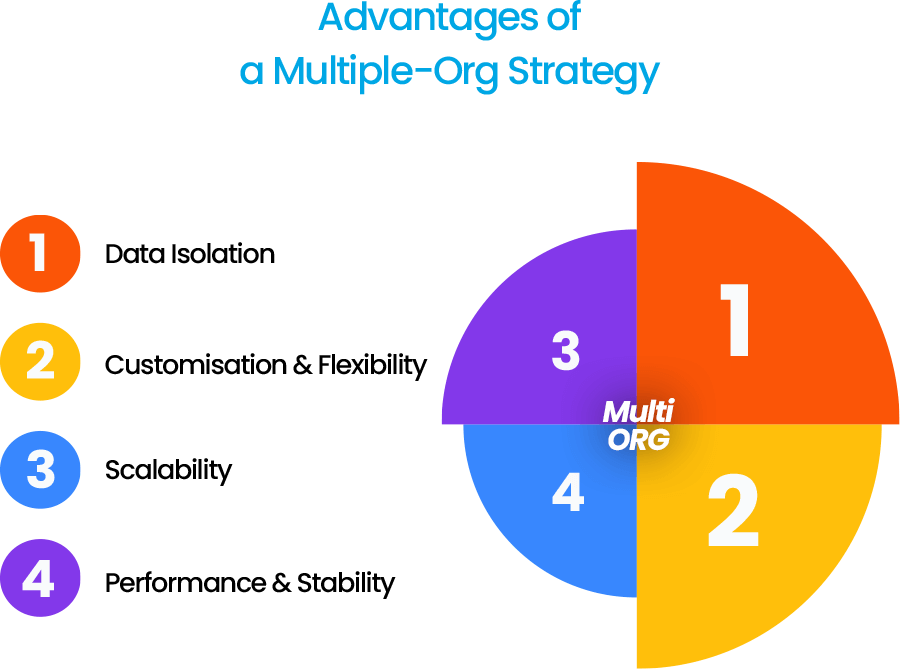
Advantages
Data Isolation: Each org operates independently, allowing for data isolation. This can be beneficial when different teams or departments within an organisation have unique data requirements or when there is a need to segregate data based on security or compliance reasons.
Customisation and Flexibility: With separate orgs, you have the freedom to customise and configure each org according to its specific needs. This flexibility enables tailored workflows, processes, and user experiences for different teams or business units.
Scalability: Multi-org strategies can support scalability by allowing you to add or remove orgs as your business grows or changes. This adaptability ensures that each org can be scaled independently without affecting the others, providing a high degree of flexibility.
Performance and Stability: By distributing the workload across multiple orgs, you can potentially improve overall system performance and stability. Each org can handle its own set of processes and data, reducing the risk of performance bottlenecks or system failures.
Disadvantages of a multi-org strategy
Complexity: Managing multiple orgs can introduce complexity, especially when it comes to data synchronisation, integrations, and maintaining consistent processes across orgs. It requires additional effort to configure and maintain each org, which can increase administrative overhead.
Increased Costs: Implementing and managing multiple orgs can result in higher costs. Each org requires its own licenses, infrastructure, maintenance, and support. Additionally, integrations or data synchronisation between orgs may require additional investments in tools or resources.
Limited Visibility: With separate orgs, it can be challenging to have a unified view of data and processes across the organisation. This lack of visibility can hinder decision-making, reporting, and analytics unless appropriate integrations or reporting mechanisms are in place.
User Experience: Working with multiple orgs may require users to switch between different orgs or systems, impacting the user experience. It can lead to additional training needs, increased complexity, and potential confusion for users who need to navigate different interfaces or processes.
Some examples of scenarios where a single-org strategy would be more advantageous than a multi-org strategy
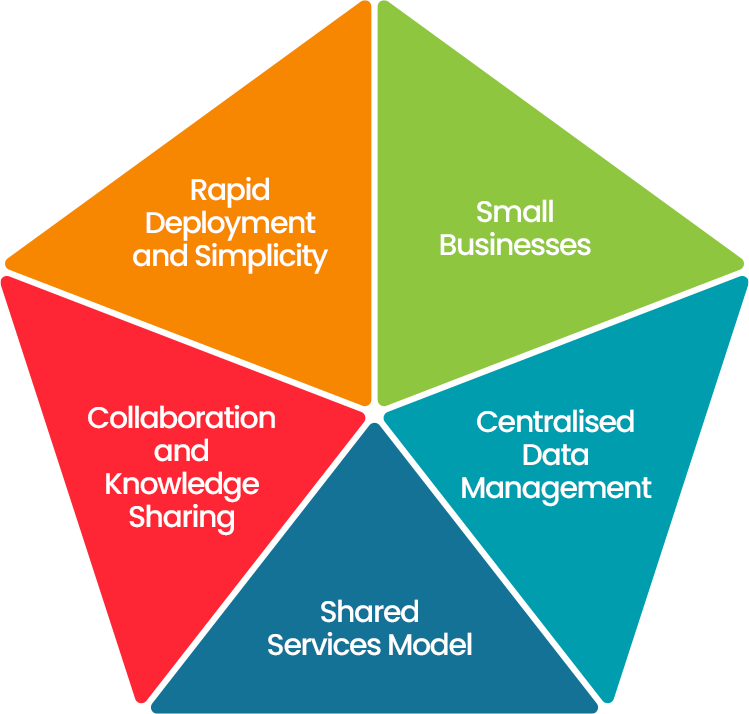
Small businesses
Small businesses with limited resources and a relatively simple organisational structure may find a single-org strategy more advantageous. It allows them to streamline their operations, reduce complexity, and avoid the additional overhead of managing multiple orgs.
Centralised data management
Organisations that require centralised data management, such as those in the education sector or government agencies, may benefit from a single-org strategy. It allows for a unified view of data across departments or entities, facilitating better collaboration and reporting.
Shared services model
Organisations that operate under a shared services model, where multiple departments or entities share common resources and processes, may find a single-org strategy more advantageous. It enables them to consolidate resources and standardise processes within a single org, leading to greater efficiency and cost savings.
Collaboration and knowledge sharing
Organisations that heavily rely on collaboration and knowledge sharing across different departments or teams may benefit from a single-org strategy. It provides a unified platform for communication, document sharing, and cross-functional collaboration, fostering better teamwork and information exchange.
Rapid deployment and simplicity
In situations where speed of deployment and simplicity are crucial, such as for short-term projects or temporary initiatives, a single-org strategy can be more advantageous. It allows for faster setup and configuration, avoiding the complexities associated with managing multiple orgs.
Remember, these are just a few examples, and the suitability of a single-org strategy depends on the specific needs and structure of each organisation. It’s always recommended to assess your requirements and consult with Salesforce experts or professionals to determine the best strategy for your organisation.
How does data synchronisation work between multiple orgs in a multi-org Salesforce strategy, and what are the potential complexities involved?
In multi-org Salesforce strategy, data synchronisation between orgs can be achieved through various methods. One approach is replicating data from a central org to other orgs using tools like Salesforce-to-Salesforce or third-party integration tools. Integration platforms like Salesforce Integration Cloud or middleware solutions can also synchronise data. Custom development with APIs and web services is another option, but requires additional effort.
However, data synchronisation between multiple orgs can be complex, especially dealing with data relationships and custom structures. Mapping and transforming data accurately is crucial for consistency. Large data volumes and updates can impact performance and conflicts may arise. Conflict resolution mechanisms are important to maintain data integrity.
Follow change management practices, evaluate complexities, and seek guidance from Salesforce experts for effective data synchronisation in a multi-org strategy.
Salesforce-to-Salesforce vs. Third-Party Integration for Multi-Org Data Synchronisation
Pros of Salesforce-to-Salesforce (S2S)
- Simplicity: Setting up S2S is like a walk in the park, no need for extra gadgets or software.
- Real-time data synchronisation: Keep everything up-to-date across the board, no delays.
- Cost-effectiveness: Since it's already part of Salesforce, there's no need to dig deeper into your pockets.
Cons of Salesforce-to-Salesforce (S2S)
- Challenges with complex setups: It might stumble a bit when things get intricate or when syncing with non-Salesforce systems.
- Data volume and frequency limitations: There are some boundaries here, so you might hit a roadblock with too much data or frequent updates.
Pros of Third-party Integration Platforms
- Supercharged integration capabilities: These platforms can handle heavy lifting, even with complex setups and massive data loads.
- Playing nice with others: They can cosy up to non-Salesforce systems without breaking a sweat.
- Fortified security: Your data is under lock and key with top-notch security features.
Cons of Third-party Integration Platforms
- Opening up the wallet: There might be some extra expenses for licenses, setup, and keeping things running smoothly.
- Hardware or software may be required: You might need to beef up your tech arsenal to make it work.
- More tinkering required: Expect to roll up your sleeves and do some extra configuration and development work.
Conclusion
In conclusion, the choice between a single-org and multi-org strategy in Salesforce hinges on factors such as company size, complexity, and customisation needs, with careful consideration of industry-specific requirements. Ultimately, the selected strategy should align closely with organisational goals and pave the way for effective Salesforce implementation and management.

